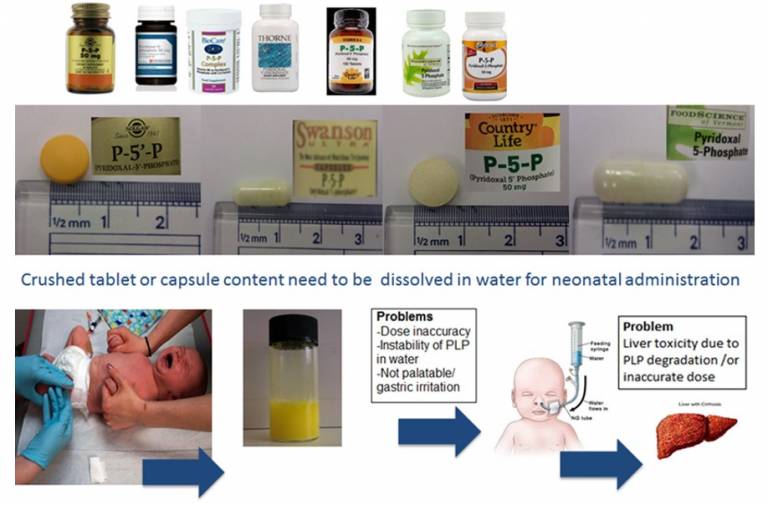Novel paediatric formulation of pyridoxal-5-phosphate to treat PNPO deficiency induced epilepsy
Optimisation and bioperformance of a novel formulation of pyridoxal-5-phosphate for treatment of pyridox(am)ine 5’-phosphate oxidase deficiency induced epilepsy in children
18 November 2019
Funder
Great Ormond Street Charity
Team
Abeer Mohamed-Ahmed, Ahad Rahim, Catherine Tuleu / UCL School of Pharmacy, Philippa Mills, Simon Heales, Peter Clayton / Institute of Child Health
Project (PO3): Objective Output Outcome
Pyridoxal-5-phosphate (PLP) is the biologically active form of vitamin B6. Pyridox(am)ine phosphate oxidase (PNPO) is an enzyme required for synthesis of PLP from vitamin B6 in the diet. PLP is converted by intestinal phosphatases to pyridoxal (PL) in the GIT which is then absorbed in to the blood circulation. In the liver, pyridoxal is converted by pyridoxal kinase into PLP. It is excreted as pyridoxic acid (PA) via the kidney.
Some children are born with metabolic disorder caused by mutation in PNPO gene. This deficiency of PNPO has been recently recognised as a cause for epileptic encephalopathy in neonates. The only treatment is PLP, which is available as a suboptimal dietary supplement in the form of tablets or capsules which when dissolved in water (to give to infants) are susceptible to photodegradation.
A new stable pharmaceutical form of PLP was developed (10 mg/ml) ensuring accurate dosing to wide age range of paediatric population. The new PLP formulation displayed B6 vitamers profile in the blood similar to pure PLP following oral administration. Liver histopathology findings after a 90 day repeated oral administration in CD -1 mice revealed no significant changes evidenced with any of the treatment groups (pure PLP ; degraded pure PLP, and new PLP formulation) suggesting that high dose PLP rather than photodegradants could be deleterious for the liver warranting a fine tuning dose finding study.

Image: Tablets in various sizes and a graphic showing that the dosage needs to be changed when being administered to children
 Close
Close

